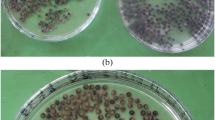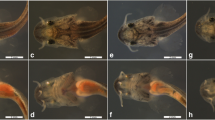Summary
Naturally occurring parthenogenesis in unfertilized turkey eggs was encountered at this station in 1952. Since its discovery, selective breeding on a family basis has been practiced yearly in an attempt to further intensify this trait in certain lines of turkeys and chickens.
Cytological studies likewise have been conducted and various experimental procedures employed in an attempt to develop a clearer picture of just where and the manner by which diploidy is restored. Available Cytological data and indirect evidence secured in related studies indicate that restoration of diploidy in unfertilized turkey ova is due to suppression of the second polar body. It would appear that in the absence of sperm, meiosis II is not completed. Chromosomes of the second polar body and those of the egg pronucleus probably never completely separate and subsequently the unfertilized ovum resumes development with a diploid complement of chromosomes.
Four potential uses of unfertilized turkey eggs and parthenogenetic poults in biological research are given.
Similar content being viewed by others
Literature
Beatty, R. A.: Parthenogenesis and polyploidy in mammalian development, pp. 1–132. London: Cambridge University Press1957.
Bergerard, J.: Parthenogenesis in the Phasmidae. Endeavour 21, 137–143 (1962).
Carson, H. L., Wheeler, M. R., Heed, W. B.: VIII. A parthenogenetic strain of Drosophila mangabeirai, Malogolowkin. Genetics of Drosophila No. 5721 (1957).
Carson, H. L., Wei, I. V., Niederkorn, Jr., J. A.: Isogenicity in parthenogenetic strains of Drosophila mercatorum. Genetics 6, 619–628 (1969).
Cuellar, O.: Reproduction and the mechanism of meiotic restitution in the parthenogenetic lizard, Cnemidophorus uniparens. J. Morph. 133, 139–166 (1971).
Darcey, K. M., Buss, E. G.: On the origin of the diploid number of chromosomes in the parthenogenetic turkey. Genetics 60, 171 (Abstract) (1968).
Darcey, K. M., et al.: A cytological study of early cell populations in developing parthenogenetic blastodiscs of the turkey. Genetics (1972, in press).
Haney, B. M., Olsen, M. W.: Parthenogenesis in premature and newly laid turkey eggs. J. Exp. Zool. 139, 469–478 (1958).
Harris, H.: Cell Fusion, pp. 1–108. Cambridge, Mass.: Harvard University Press 1970.
Healey, W. B. et al.: A skin-grafting analysis of fowl parthenogens: Evidence for a new type of genetic histocompatibility. Ann. N. Y. Acad. Sci. 99, 698–705 (1962).
Kosin, I. L., Nagra, H.: Frequency of abortive parthenogenesis in domestic turkeys. Proc. Soc. Exp. Biol. Med. 93, 605 to 608 (1956).
Kosin, I. L., Sato, I.: A study of abnormalities in parthenogenetically developing germ discs and embryos of the domestic turkey. J. Morph. 103, 263–276 (1960).
Olsen, M. W.: Maturation, fertilization and early cleavage in the hen's egg. J. Morph. 70, 513–533 (1942).
Olsen, M. W.: Fowl pox vaccine associated with parthenogenesis in chicken and turkey eggs. Science 124, 1078–1079 (1956).
Olsen, M. W.: Nine year summary of parthenogenesis in turkeys. Proc. Soc. Exp. Biol. Med. 105, 279–281 (1960).
Olsen, M. W.: Rous sarcoma virus associated with parthenogenesis in turkey eggs. Nature 190, 191–192 (1961).
Olsen, M. W.: Polyembryony in unfertilized turkey eggs. J. Hered. 53, 125–129 (1962a).
Olsen, M. W.: Killed virus vaccines in relation to parthenogenetic development in turkey eggs. Am. J. Vet. Res. 23, 855–857 (1962b).
Olsen, M. W.: Delayed development and atypical cellular organization in blastodiscs of unfertilized turkey eggs. Develop. Biol. 12, 1–14 (1965a).
Olsen, M. W.: Twelve year summary of selection for parthenogenesis in Beltsville Small White turkeys. Brit. Poult. Sci. 6, 1–6 (1965b).
Olsen, M. W.: Segregation and replication of chromosomes in turkey parthenogenesis. Nature 212, 435–436 (1966a).
Olsen, M. W.: Parthenogenesis in eggs of White Leghorn chickens following an outbreak of visceral lymphomatosis. Proc. Soc. Exp. Biol. Med. 122, 977–980 (1966b).
Olsen, M. W.: Potential uses of parthenogenetic development in turkeys. J. Hered. 60, 346–348 (1969).
Olsen, M. W., Buss, E. G.: Role of genetic factors and fowl pox virus in parthenogenesis in turkey eggs. Genetics 56, 727–732 (1967).
Olsen, M. W., Fraps, R. M.: Maturation, fertilization and early cleavage of the egg of the domestic turkey. J. Morph. 74, 297–309 (1944).
Olsen, M. W., Fraps, R. M.: Maturation changes in the hen's ovum. J. Exp. Zool. 114, 475–490 (1950).
Olsen, M. W., Marsden, S. J.: Embryonic development in turkey eggs laid 60–224 days following removal of males. Proc. Soc. Exp. Biol. Med. 82, 638–641 (1953).
Olsen, M. W., Marsden, S. J.: Development in unfertilized turkey eggs. J. Exp. Zool. 126, 337–347 (1954).
Olsen, M. W., Poole, H. K.: Further evidence of a relationship between fowl pox virus and parthenogenesis in turkey eggs. Proc. Soc. Exp. Biol. Med. 109, 944–946 (1962).
Poole, H. K.: The mitotic chromosomes of parthenogenetic and normal turkeys. J. Hered. 50, 150–154 (1959).
Poole, H. K.: Further evidence of heterozygosity in parthenogenetic turkeys. Nature 206, 324 (1965).
Poole, H. K., et al.: Evidence of heterozygosity in parthenogenetic turkeys from homograft responses. Proc. Soc. Exp. Biol. Med. 113, 503–505 (1963).
Poole, H. K., Olsen, M. W.: The sex of parthenogenetic turkeys embryos. J. Hered. 48, 217–218 (1957).
Sarvella, P. A.: Development of parthenogenesis in turkeys. Genetics 64, 56 (Abstract) (1970).
Sarvella, P. A.: Origin of parthenogenesis in turkeys. Genetics 68, 57 (Abstract) (1971).
Sato, I., Kosin, I. L.: Chromosome complements in parthenogenetic turkey embryos. Proc. Xth Internat. Congr. Genetics 2, 249–250 (Abstract) (1958).
Sato, I., Kosin, I. L.: A cytological study of the parthenogenetically developing turkey germ discs and embryos. Cytologia 25, 256–266 (1960).
Yao, T., Olsen, M. W.: Microscopic observations of parthogenetic embryonic tissues from virgin turkeys. J. Hered. 48, 133–134 (1955).
Author information
Authors and Affiliations
Additional information
Communicated by H. Abplanalp
Rights and permissions
About this article
Cite this article
Olsen, M.W. Frequency and cytological aspects of diploid parthenogenesis in turkey eggs. Theoret. Appl. Genetics 44, 216–221 (1974). https://doi.org/10.1007/BF00274369
Received:
Issue Date:
DOI: https://doi.org/10.1007/BF00274369




